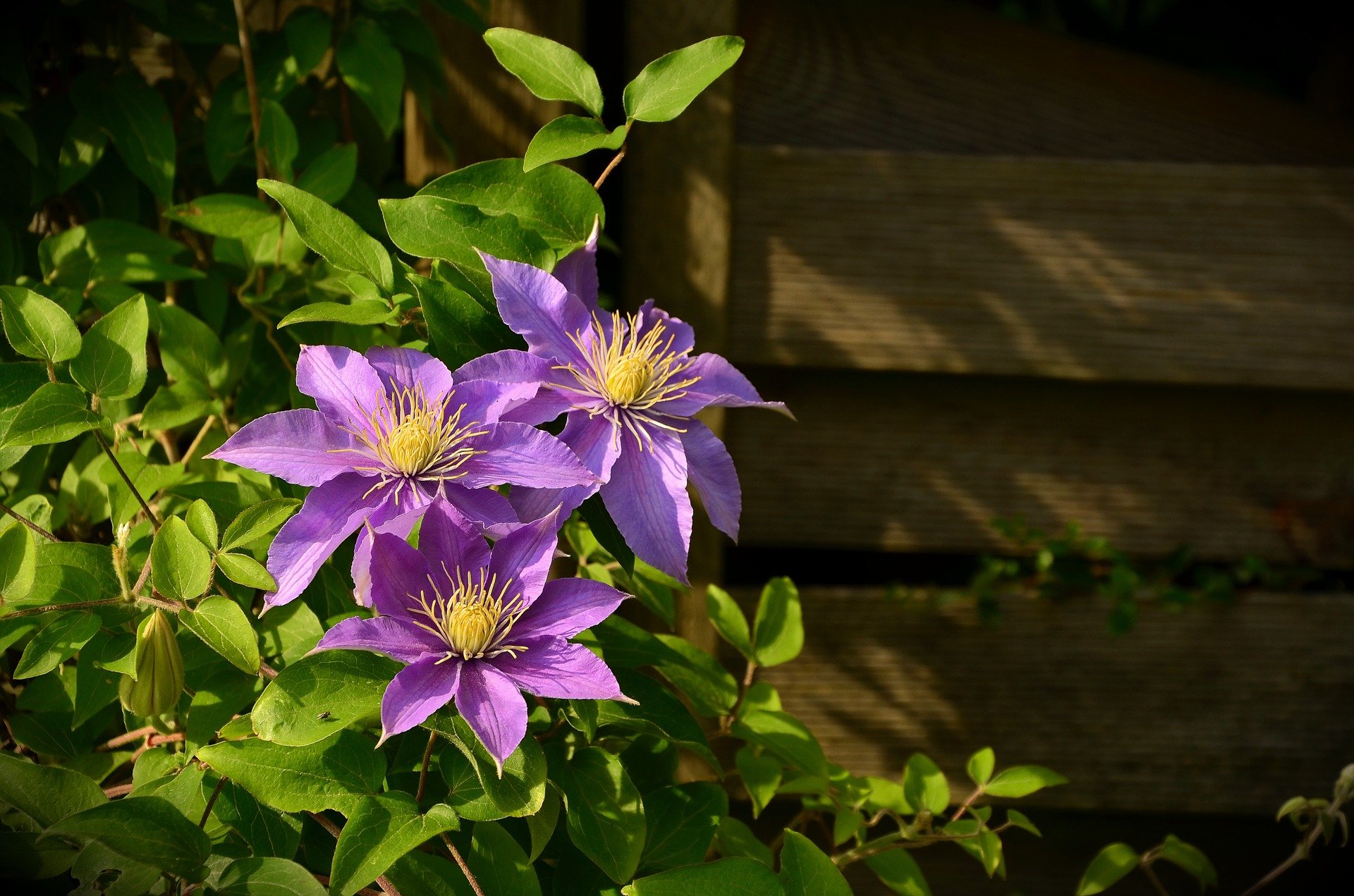
The best time to plant Clematis is spring, summer or early fall in a location of 5-6 hours of sunlight. Clematis roots are long and run deep and like it cool and damp, but not soggy. Planting annuals around the base, a low growing shrub to shade the roots, or mulch the ground around the base of the Clematis plant to help keep the soil and roots cool. Loosen the soil to a depth of 2 feet. Mix this soil with peat and sand, and a handful of lime. Carefully set your Clematis plant in the holes so the crown is 1 inch below the soil level when the plant was in the pot. Stake the plant and if possible wrap a piece of screen loosely around this to prevent animals from breaking or eating off the stem for the first year. The stake should be placed toward the trellis, etc. to train the plant to its permanent support. Keep your Clematis well watered, do not let it dry out. In years to come always soak well once a week in dry weather. Feed twice a year with a balanced granular fertilizer, or a good water-soluble fertilizer that will get to the plant much quicker. Prune your Clematis the first spring after planting, back to 10-12”. This is very important to get your plant off to low branching and heavier flowering over the whole Clematis vine. Apply mulch around the base of your Clematis through the winter dormant months. With proper care, your Clematis will give you much enjoyment for many years!
PRUNING TECHNIQUES
Based on Clematis Type
1. This group of clematis produces their flowers directly from old stems and, therefore, pruning must not be done until right after all flowering has been completed. Prune this group by removing all dead and weak stems immediately after flowering. Large established plants over 15 feet are not normally pruned, especially if they are growing trees. All stems at this time should be tied into position on their trellis or other host. Also, if the Clematis has outgrown their space the correct and only time to prune to size is right after all flowering is done. After pruning new growth will begin, this being the stems for next year’s flowers.
2. In this group all first flowering comes from last season’s ripened stems. In early spring, watch for swelling leaf buds beginning to show. Cut all dead material off above these swelling buds. Be sure all growth is tied to trellis, etc. at this time. Do not tie to tightly, so growth can begin and not be hampered by tying too tight or cracking these stems.
3. This group blooms later and from new growth. This group should be pruned in February or March as new leaf buds begin to show low on the plant. All dead material above these buds should be removed at this time. Clean out any old foliage or foliage with mildew at this time also.

